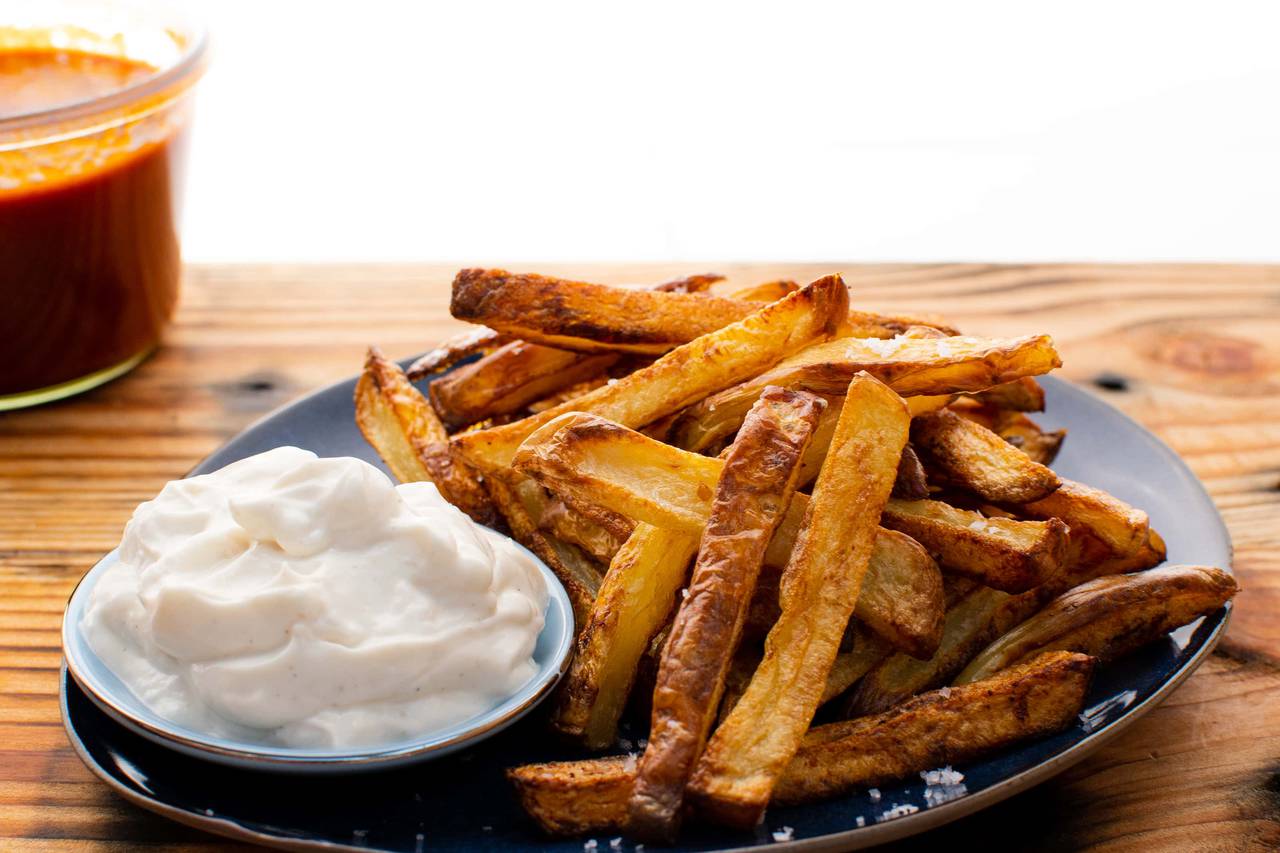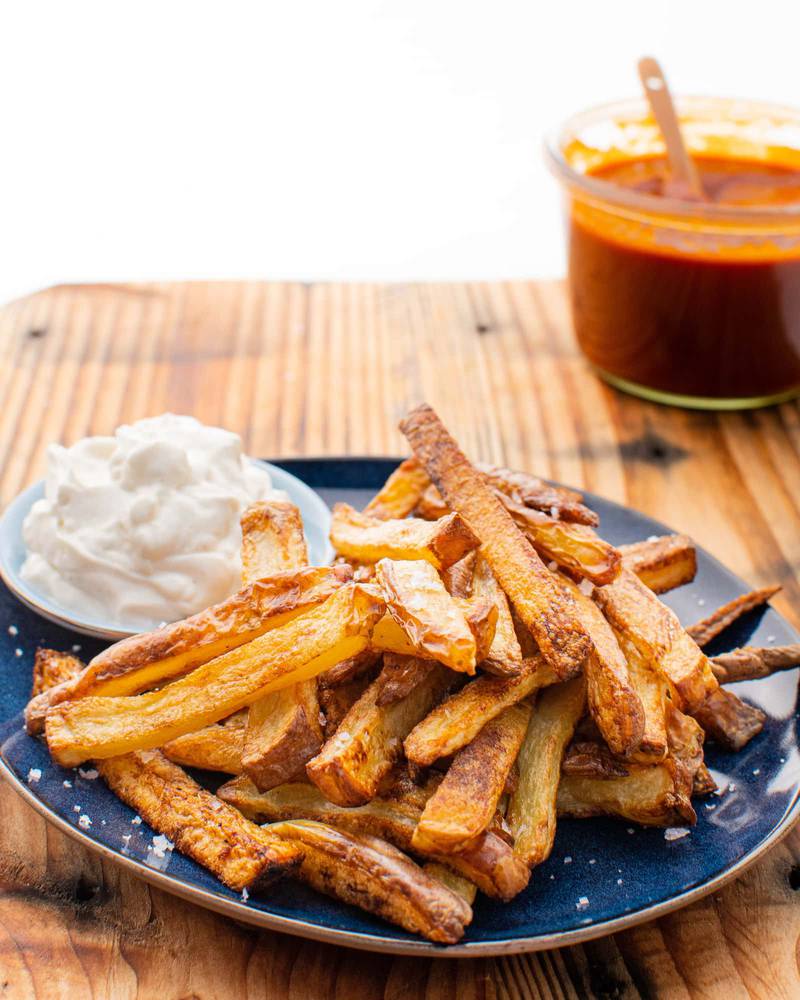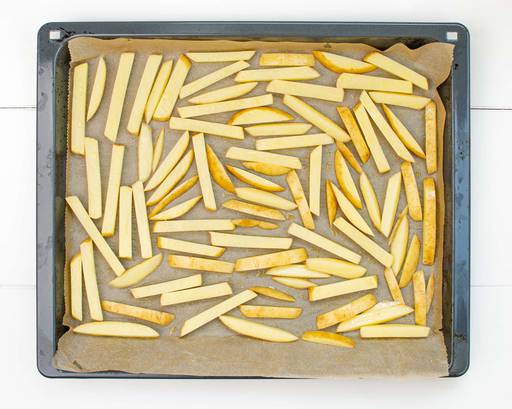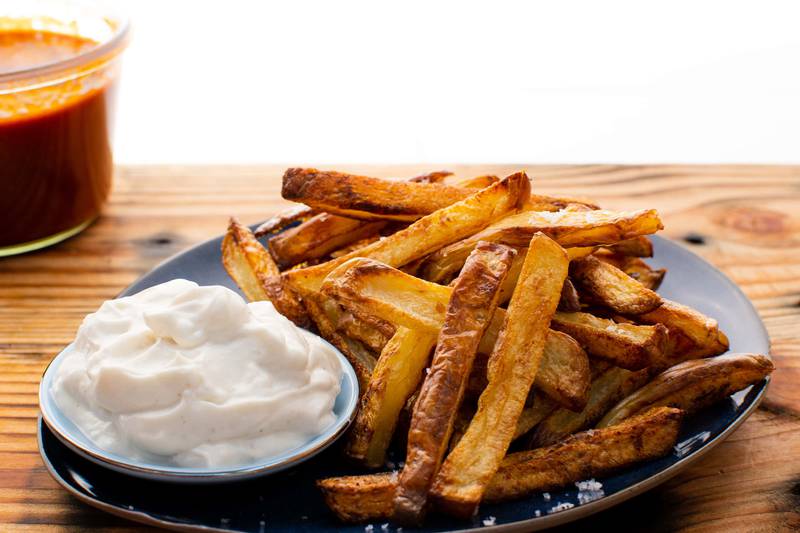Home-Made Baked Potato Fries
Who doesn't love french fries?! 💛
As a side-dish or just a quick snack, our home-made baked fries are perfect for almost any occasion. Our fries are oven-baked instead of deep-fried which makes them a lot less unhealthy. Let's say healthy-ish ...
Potatoes seem to have a bad reputation for having high amounts of calories and limited nutritional value. Fortunately, that picture is not entirely true. Potatoes are roughly 80% water and 20% solid particles [1]. They are an important source of vitamins and minerals [1, 2, 3]. One medium (173 g) baked potato with skin contains about the following amount of recommended dietary allowances: 28% of vitamin B6, 18% of potassium, 14% of vitamin C, 11% of phosphorus, 7% of magnesium and 6% of iron [4, 5, 6, 7, 8]. Baking a potato with its skin is a good cooking method to retain all minerals [1].
Also, check out our self-made mayonnaise or BBQ sauce to go with your home-made baked fries.
Home-Made Baked Potato Fries Recipe
Ingredients
Can sub with canola oil
Instructions
Step 1:
Preheat the oven to 210 °C (410 °F). Scrub potatoes clean and cut them into thin, long pieces.
Step 2:
Put the sliced potatoes in a big bowl, add oil and toss around until all fries have an equal coat of oil around them.
Step 3:
Spread fries in a single layer on an oven tray and make sure they have enough space.
Step 4:
Bake fries for 25 to 30 minutes until golden brown and crispy. Sprinkle with some salt and serve.
Sources
1. Navarre, D.A., Goyer, A. and Shakya, R., 2009. Nutritional value of potatoes: vitamin, phytonutrient, and mineral content. In Advances in potato chemistry and technology(pp. 395-424). Academic Press.
2. Dale, M.F.B., Griffiths, D.W. and Todd, D.T., 2003. Effects of genotype, environment, and postharvest storage on the total ascorbate content of potato (Solanum tuberosum) tubers. Journal of Agricultural and Food Chemistry, 51(1), pp.244-248.
3. Kant, A.K. and Block, G., 1990. Dietary vitamin B-6 intake and food sources in the US population: NHANES II, 1976–1980. The American journal of clinical nutrition, 52(4), pp.707-716.
4. USDA: https://fdc.nal.usda.gov/fdc-app.html#/food-details/170434/nutrients
5. US National institutes of health, Office of Dietary Supplements: Fact Sheet for Health Professionals
Comments
There are no comments yet.




